Before we directly jump right in what the best animation software is, we probably need to start with what animation is.
The animation is a comprehensive art or an artistic expression that combines painting, film, digital media, photography, music, literature and many other art types. The more standard definition of animation is the imaging technology that takes pictures of the objects frame by frame and plays them continuously as moving images.
Normally, we can divide animation into 3 types, traditional animation, stop motion animation, and computer animation.
Traditional animation, or also called cel animation software and hand-drawn animation. It is the earliest type of 2D animation. In this type, animators draw all frames of the animation on paper by hand. Each frame would differ slightly from another one that is before or after this frame. Then each picture will be traced on a transparent acetate sheet, called cel (celluloid) (Tip: This is the reason why it is also called cel animation). When these pictures on the cels are played orderly, we will get the animation.
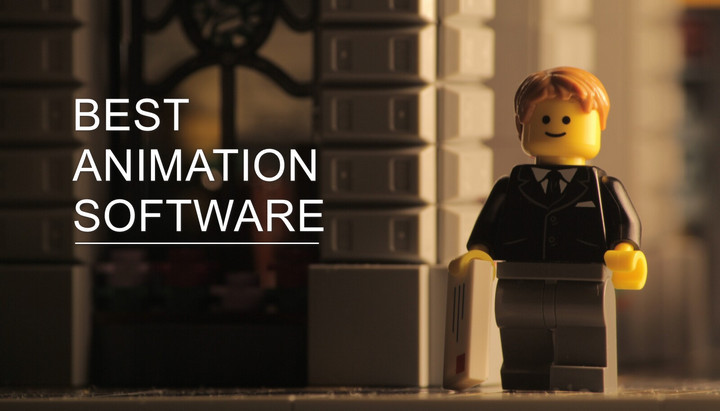
So obviously, celluloid animation has no requirement for the animation software at all. Then let's move to the stop motion animation.
Stop motion animation requires animators to take pictures of the characters into digital formats, instead of drawing them on paper. These characters are commonly made of clay, paper, and cloth, or played by the puppets, or some other kinds of stuff.
Compared to the cel animation, stop motion animation will save a lot of work. After all frames, or pictures of the animation are taken or recorded, then we need some software to re-organized and edit these pictures to make the final version. So if you are a fan of the stop motion animation, in the following words, you will find some stop motion animation software to help you.
Then the third one, computer animation. This type of animation mainly benefits from the CGI (computer-generated imagery) technology. Simply put, we use the hardware, like CPU, GPU, etc. to help us create the animation character and render it into the image. Base on the dimension of the character, computer animation has 2D animation and 3D animation.
2D animation techniques focus on image manipulation, while 3D animation techniques help us build the virtual worlds in which characters and objects move and interact. Or we can say that the 3D animation can create images that seem real to the viewer.
To make the computer animation, we have to use the software which invokes the computer-generated imagery technology. And the majority of animation software that we talk about would lie in this category.
Now I can answer the question that what animation software is. Animation software allows the animator to create the motion on a frame-by-frame basis. Each frame is the equivalent of a single drawing or image. The frames are often created within the software, although there is also some animation software which allows frames to be brought in from external sources, for example, the stop motion animation.
In the following part, we mainly show you the ultimate list of best 2D animation software with 22 options.
1. Adobe Animate (Adobe Flash) - Animation Software with Bone Tool and Popular with YouTubers
- Running OS: Windows 10 build 1703 and later, macOS 10.12 Sierra and later
- Best for: Professional
- Price: $20.99/month or $239.88/year
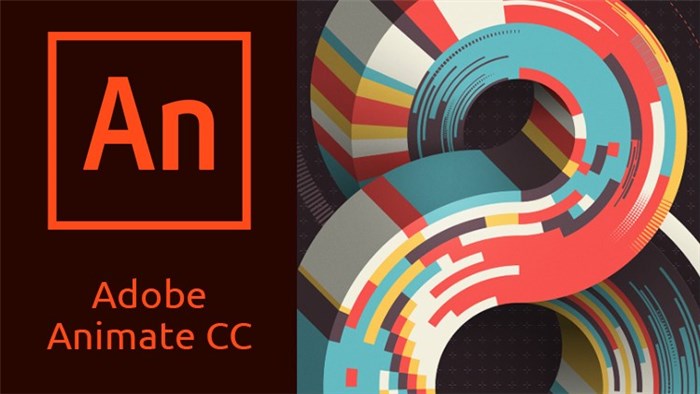
Adobe Animate was renamed from Adobe Flash Professional and is now with the stable release Animate CC. It maintains the original Flash developing features, and also adds the new HTML 5 related tools to provide web developers with more creative support for audio, pictures, video, and animation making and designing.
Adobe Animate has a lot of new features. Especially while continuing to support Flash SWF and AIR formats, it is also compatible with HTML5 Canvas, WebGL, and almost any animation format, such as SVG. These are the reason why many YouTubers love it, like Jaiden Animations, Domics, Jazza, SomeThingElseYT, Alan Becker, and more. So if you are searching for a piece of animation software for a YouTube video and channel, I would strongly recommend Adobe Animate as the best option.
As for the specific animating features of Adobe Animate, the bone tool feature must be the one that I love most.
What is the Bone Tool?
The bone tool uses inverse kinematics (IK). So what is inverse kinematics?
IK reflects a form of movement from the hand to the shoulder in parent-child relationships. In this movement, the movement starts from one bone. When one bone is in motion, it will naturally drive the movement of its connected bone.
When IK is applied to animation, as long as we determine the start bone or joint, the movement of other bones or joints will be automatically generated by the system. Compared with FK operation, the operation is relatively simple and intuitive.
2. Flipnote Studio - Animation Software That the Nintendo Switch Uses
- Running OS: Nintendo DSI and 3DS
- Best for: Kids
- Price: Free
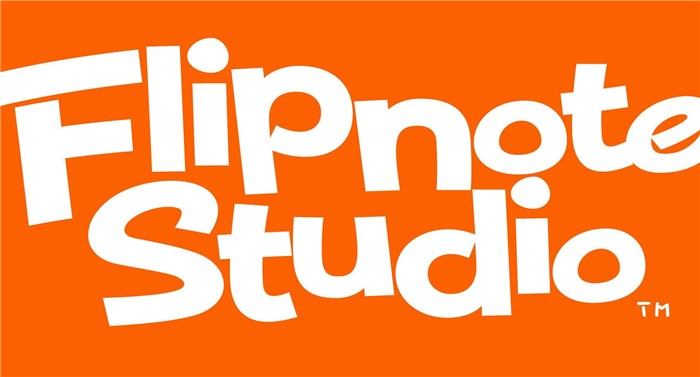
Flipnote Studio is a free Nintendo application, originally named Moving Notepad, which helps users create flip-book style animations. It is only available on Nintendo operating system. With it, users can make your imagination with both words and pictures. You can also add sounds to them, and unite them orderly. The frame-by-frame animation product would be finished.
It mainly provides three tools to help you draw, i.e., a pen, an eraser, and a paintbrush. Each one of them will have more detailed features. Besides, there are also additional features like layering, enlarging, shrinking, moving, copying, pasting, cutting, etc.
Flipnote Studio also supports taking pictures directly, and you can put it in your animation as a frame (but only available for the Japanese version). The maximum frames of one flip-book animation would be 999. With the DSi microphone, you can record up to a 2-second long sound for each frame. You can also import the sound files you love. With them, even for kids, they can easily create a lovely animation.
3.FlipaClip - Animation Software for Kindle Fire
- Running OS: iOS and Android
- Best for: Beginners
- Price: In-app Purchases
FlipaClip is a mobile software that draws pictures, and finally synthesizes these pictures, frame by frame, to make the animation. If you are looking for a helper to make astonishing animation on your Kindle device, like the Kindle Fire, then we would sincerely recommend FlipClip to you.

Main features of FlipaClip include:
- Basic tools like the brush, the eraser, the lasso, the paint bucket, and the text.
- Drawing straight lines, squares, and ellipses.
- Copy and paste. You can copy a small part of the content or a whole frame by the lasso tool.
- Onion skin.
- Support multiple layers in one frame.
- Support importing videos and pictures and exporting pictures and animation in gif or mp4 format.
4. Animaker - Animation Software for YouTube Videos
- Running OS: Online, cloud-based
- Best for: Business
- Price: Free plan with limited features, Growth plan $12/year, and Pro plan with 468/year
Animaker is a could-based animated video making platform, or we can also call it an online animation making platform. Why call it a platform? Because it loads a bunch of amazing tools specifically designed for different animated video types. For animated video types, there are applications for Christmas video greeting, Facebook video, cartoon video, advertisement video, YouTube video, birthday video, lyric video, Instagram video, text animation, video resume, etc. And for the tool names, there are explainer video, video infographics, vertical video maker, whiteboard video maker, 2D video maker, intro maker, photo video maker, promo video maker, slideshow video maker, Animaker Enterprise, and more.
For different animated video types, Animaker will provide you with a customized template. Or you can also choose the blank template to tell your original ideas.
However, I guess that many of you wonder what exact features these Animaker tools can provide, right? Check them in the following. Please notice that here we choose the blank template for the explanation.
When you get into Animaker editing dashboard, it will look like this,
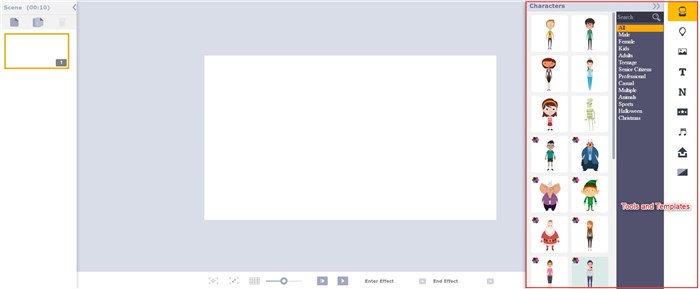
All features would lie on the right side. Features include:
- Character - There will be some character designed templates available. The good thing is that you do not need to create a character by yourself and save a lot of energy. But the bad thing is that if you plan to create a character on your own, there is no way out since Animaker does not provide this function.
- Properties - The animated pieces of stuff that we may use in our daily life, like computer monitors, office desk, chair, etc.
- Backgrounds - Where you can choose a background suitable for your animation, like a park, the desert, the grass lawn, etc.
- Text - Where you can design the text in your animation.
- Number - If you need some templates for the number and data, you can find some here.
- Special Effects - As the name shows, it includes special effects like snow, bomb drop explosion, tornado, etc.
- Music - Add some audio to your animation. There are examples Animaker provides, and you can also upload or record the sound you like.
- Upload - A feature that enables you to import images, sound and voice-over to your animation.
- Transition Effects - Where you can design how one frame goes into another frame. Effects include slide left, slide right, fade, blur, etc.
5. Pivot Animator - A Stick-figure Animation Maker
- Running OS: Windows
- Best for: Beginners
- Price: Free
Pivot Animator, well, just as we have told you in the title above, is specifically designed for making stickman animation. With it, all that the user needs to do are just to drag the fulcrum and create a new frame and finally export it to the required format. It is easy to complete even if you are making an animation for the first time.
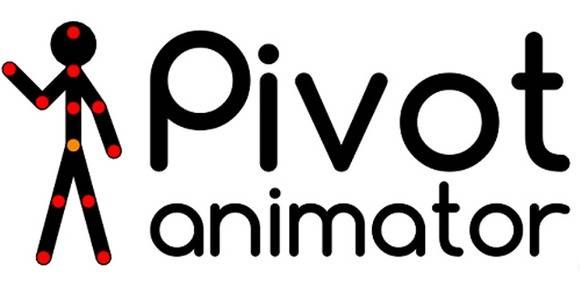
It is much simpler than Adobe Flash and easier to get started. In Pivot, your work can be saved in .piv format for next editing; or, you can save it in.GIF format to make your dynamic expression package; or, you can export it to.AVI format for post-processing; or, you can even save your work as.PNG and.JPEG, or even vector graphics.
Some Personal Experience Which May Help You:
Compound method: If you want to create a character type, such as an equal sign, you can first draw a three-sided square box, and then change the line other than the equal sign to a thickness of 0. And the equal sign is completed.
Moving production: If you make a character, but sometimes you will click the fulcrum that does not move. How to do with it? You can make it from the yellow fulcrum. All the lines start from here, which is equivalent to a tree. It starts to grow at the bottom. Keep the original line dynamic, and then make the other lines static, so that you can retain a complete character.
Making Curves: Draw slowly with many straight lines, like many very polygons, that is, many straight lines, but it looks a little curved.
6. Powtoon - Animation Software with Voice-over
- Running OS: Cloud-based or online
- Best for: Business or tutorial video making
- Price: Free with limited features, $19/month for Pro plan, $59/month for Pro plus plan, and $99/month for Agency plan
Powtoon is a cloud-based or online animated presentation and tutorial video-making application. As we said, Powtoon is quite different from most of the other animation software that we have listed, and it mainly helps users with creating animated videos, but not animated cartoons and films.
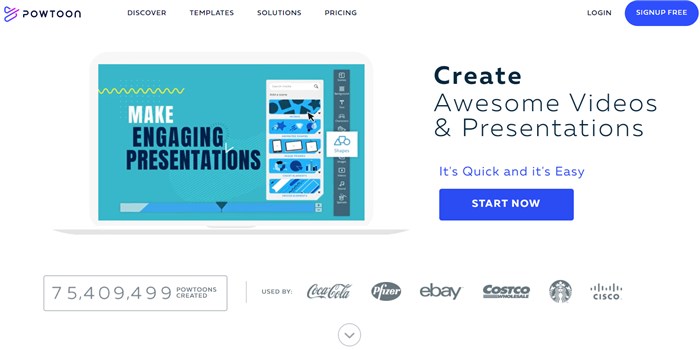
It provides solutions for business company, agency, education, marketing, training, internal comms, PowerPoint video, and YouTube video ads. With it, users do not need to do some painting, modeling, or more such complicated kinds of stuff. There it contains hundreds of fancy templates which Powtoon has made before and keeps adding to make the job done much more easily. Each template is categorized with unique title and purpose, and so users will be not in a puzzle about which one should be used. For example, if I am going to make a persuasive video for my product selling, then I just need to go to the Sales category and choose one template from there which I prefer. You can just use it in your animated video if it meets your needs, or you can edit it for better. See, it is just so simple as that. Also, you can start from a blank or import the files that you have to edit.
Powtoon allows users to use it for free, but there are just some limited features compared to the paid version. With the free version, the exported animated video would be branded with the Powtoon logo. The maximum length of the animated video would be just 3 minutes. And the free cloud storage would be just 100MB. Surely, some templates are not available for the free plan.
7. Toon Boom Harmony - Animation Software Warner Bros Use
- Running OS: Windows, macOS, Linux
- Best for: Beginners to Professionals
- Price: $24/month Harmony Essentials, $60/month Harmony Advanced, $112/month Harmony Premium
Toon Boom is a professional animation software company in Canada. The company's full name is Toon Boom Animation. There are many types of animation software produced by this company, which are aimed at users with different needs for animation production. Many famous animation studios in the world, like the Warner Bros, and outstanding animation works, like Spongebob, Family Guy, Adventure Time, etc. are made with its products.
Here in this list, we mainly tell you something about Toon Boom Harmony. Toon Boom Harmony's predecessor is the famous USAnimation.
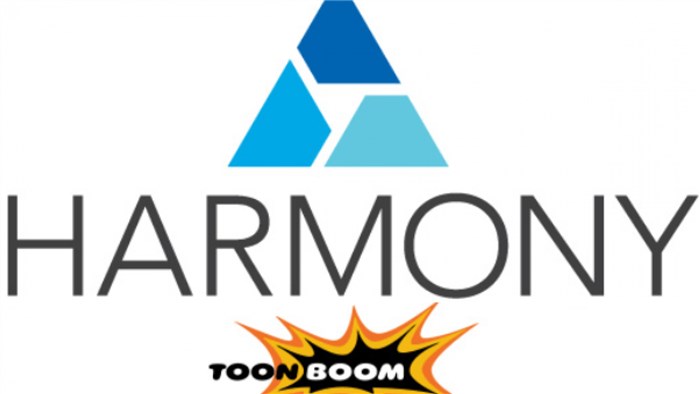
Toon Boom Harmony is divided into several functional modules, including Stage, Paint, XSheet, Scan, Play, and Control Center. The Stage is the most important function module in this software, and most of the production of animation is completed there.
What Special Features Toon Boom Harmony Has?
- Synchronization - A major feature of Toon Boom Harmony is that after the software is installed, a server setting needs to be established so that different types of work in different production links of an animation team can upload their completed animation work to the server in real-time. And the management authors can clearly and efficiently manage the current animation production progress.
- Module Library - Toon Boom Harmony has a special effects library with more than 50 modules, which can be combined into a variety of animation effects.
- True 3D Space - Toon Boom Harmony has a function called Perspective. In it, users can rotate objects in true 3D space, which is quite helpful to facilitate the production of animated pictures of perspective relationships between objects near and far as the camera moves. It is particularly convenient to make camera lens push-pull movements for more accurate front-background perspective relationships.
- Network View - In the Network view, users can set nodes to add special effects to animation layers or specify the hierarchical relationship between animation layers.
8. TVPaint Animation - Animation Software That Howard Simshurst and Vivziepop YouTube Channels Use
- Running OS: Windows, macOS, Linux, Android, AmigaOS
- Best for: Personal and Business
- Price: €500 for Standard Edition, €1250 for Professional Edition
If you are a big fan of Howard Simshurst or Vivziepop YouTube channel, then you may be familiar with this animation application, because they use it for their YouTube videos.
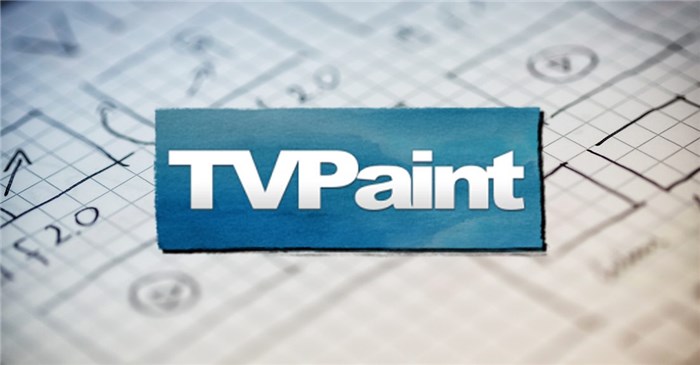
TVPaint Animation is a 2D animation production software based on bitmap technology, developed by the France company - TVPaint Developpement SARL. Thanks to this technology, you can create more personalized animation works in a shorter time in the traditional page-by-page mode, than the gouache, watercolor, oil painting, crayon drawing, pencil drawing, and many other styles. It also has an automatic preview function that cannot be achieved in traditional animation techniques.
TVPaint Animation is not a traditional drawing software that provides multiple types of modes. It has no constraints on the type of painting in your work process. You can feel free to combine your drawing on paper with electronic animation. You can also choose to use different software in combination with TVPaint or use only TVPaint Animation.
TVPaint Animation contains all necessary tools for animation production except paper platform media, including management of layers and images, painting light table, reusable workspace, image database which can store referenced records and model tables, etc.
Various other functions can also be easily positioned on the timeline screen, like marking bookmarks and drawings (you can do this by marking keyframes). Under the Jump Panel, you will be able to set your shortcuts for custom animation previews.
Finally, you can use rebinding to make temporary corrections to the painting's continuous motion, rotation, and scaling on the drawing perspective table. This feature makes it easier to illustrate in a separate part. It's like separating the image drawn on the paper from the positioning ruler. The creation of intermediate paintings and the removal of edges are essential functions when making animations.
With TVPaint Animation, you can also easily import almost all common format video files. For example, avi, mpeg, etc. After easily importing pictures and videos, just simply drag the required files into the window of TVPaint Animation software to make it one of the layers that make up a continuous animation effect. Because of this system, you can add a layer while drawing the main image in the video included in the layer without affecting the original video.
This will also save you a lot of work time.
TVPaint Animation's timeline contains one very important track: the sound space. You can manage one (TVPaint Animation Standard Edition supports) or multiple (TVPaint Animation Professional Edition supports) soundtracks, like the volume and pitch of the sound. You can also easily combine multiple sound rays, images, and lines to create a consistent mouth shape effect for animation.
9. Synfig - Animation Software with Tweening
- Running OS: Windows, macOS, Linux
- Best for: Beginners
- Price: Free (Open-source)
Synfig is an industrial-grade, powerful 2D vector animation production software that can produce movie-quality animations with minimal human and other resources. Synfig Studio is open source and free, available for Windows, Linux, and Mac OS X operating systems.
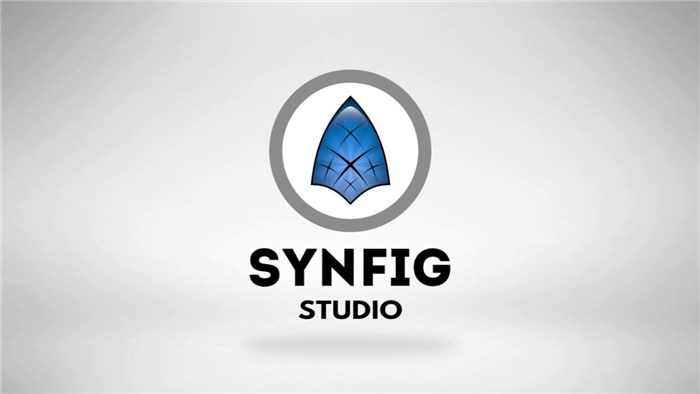
The outstanding animation technology used in this software eliminates the kind of manual transition framework, resulting in a smooth motion without the need for animators to draw frame by frame. Mostly we call it tweening.
What is Tweening?
Tweening, or inbetweening, is a key process of the animation making, traditional animation or computer animation. It is the process of drawing manually or generating with the computer algorithm intermediate frames between two keyframes, to make the first image naturally and smoothly evolve into the second image.
Synfig can use rendering and gradient expression to free the painter from the trouble of drawing shadows (that is, shade processing) frame by frame. At the same time, there are a large number of real-time effects that can be applied to layers or layer groups, such as radial blur effects, color adjustments, etc., which can be applied independently of the resolution. Other features include the ability to control and animate line width and link-related data with line control points. Synfig enables high dynamic range imaging. In this way, you can produce high-quality works with a small amount of manpower.
Software developer Robert Quattlebaum said: "... the original idea of Synfig was to eliminate the intermediate frame process. Of course, this is not the only feature that makes Synfig so unique. In addition to eliminating the intermediate frame process, I also hope that Synfig can be used in Everywhere animated beyond storyboard drawing and editing."
10. Spine - Animation Software Compatible with Unity and for Game Development
- Running OS: Windows, macOS, Linux
- Best for: Beginners and Professionals
- Price: Essential Plan for $69, Professional Plan for $299, Enterprise Plan for $2200 base price + $269 per user
If you are looking for a game developing application, then I would sincerely recommend you have a try with Pine. Spine is a professional 2D skeletal animation making tool for games. It is designed to provide a more efficient and streamlined workflow to create the animations needed for games. And here are its detailed features,

- Dopesheet - This is kind of the most important feature of the Spine in the animation production process. All the key details are shown here, with which you can create animations and fine-tune the timing of time.
- Meshes - It allows you to define polygons within rectangular boundaries. This will increase the space usage of the final texture atlas, because pixels outside the polygon will be ignored, and such optimization is particularly important for mobile devices. Another feature of meshes is support for free-form FFD and skinning.
- Graph Editor - There you can control the difference between the two frames by adjusting the Bezier curve in the curve editor to achieve a lifelike animation effect.
- IK (Inverse Dynamics) Posing - This tool can use inverse dynamics to easily adjust the pose.
- Skins - Where you can switch the picture material for a good animation and change the pictures attached to the bones for animation reusing.
- Bounding Boxes - Boxes are objects attached to bones that move with them. It can be used for collision detection and physical integration.
- Free-Form Deformation - It allows you to deform the picture by moving the grid points. FFD can make meshes for stretching, squeezing, bending, rebounding, and some other functions that rectangular pictures cannot.
- Skinning - This feature agrees to attach the specified points in the mesh to the specified bones. The points will then move with the bones, and the mesh will actively deform itself. Pictures of characters that can be controlled with skeletal movements are now warped.
- Export formats - Spine can export animations in projects as JSON or binary format files, which can be perfectly reproduced in the Spine runtime library. Spine can also export animation files like GIF, PNG or JPG, as well as AVI or QuickTime video files.
- Importing - Spine can find and import data files generated by other tools through a path. It can identify JSON or binary data that meets the requirements. You can also import skeletons and animations from other Spine projects.
- Texture Packer - Spine can pack pictures into texture atlases, which can improve your rendering efficiency in the game. Spine's texture packing tool has very versatile functions such as stripping blank areas, rotating, actively scaling, etc ... the main purpose of which is to make full use of space.
- Executing - Making amazing animations is just part of the game making job, and you also need to display them in the game. The Spine execution library enables your game engine to play these animations as if they were displayed in an animation editor. The Spine execution library provides a set of APIs to directly access bones, attachments, skins, and other animation data. In the program, you can control the bones, blend animations, fade in and out, and more. The official execution library is on GitHub and authorizes Spine users to use the Spine execution library in their programs.
Supplementary Knowledge about Skeleton Animation:
On early computers, rendering itself has taken up a lot of CPU resources. Therefore, for rendering, a strategy of changing space to time is often adopted to avoid further burdening the CPU in model rendering. The frame animation model came into being under these conditions. The more famous frame animation format is the MD2 used by Quake2. To this day, frame animation still exists, but frame animation is more to describe small objects with relatively few actions.
After the emergence of the GPU, the problems of the CPU have not been as prominent as before, and also some new methods and technologies appear and can be applied. Skeleton animation technology is just one of them. Compared with frame animation, skeletal animation is more flexible and changeable, but at the same time, skeletal animation requires more calculations, so skeletal animation is often applied in models that need to focus on the details of the movement.
Skeleton Animation Principle:
The idea of skeletal animation comes from human bones. For example, all muscles and skin of a person's upper limbs are affected by the bones of the upper limbs, while a person's ankle joints are affected by the bones of the lower legs and feet. Based on this, we can understand skeletal animation as two concepts,
Skeleton: An abstract concept used to control skin, such as human bones controlling skin. It is not visible in the final rendering result. Classes such as human bones, bones are a tree-shaped collection of bones, and each bone is associated with several skin vertices. When a bone moves, all skin vertices associated with it also move under the influence of the bones.
Skinmesh: Factors that are controlled by the bones and displayed, such as the skin of the human body, which is affected by the bones. In the final rendering result, the skin will be completely displayed, and the skin is the elements to be rendered such as vertices, normals, and texture coordinates. Among them, the most critical is, of course, the vertices, which will be directly involved in the movement of the bones, thus making the entire model look like the bones determine.
11. Retas Studio – Leading Software in Japan's Anime Industry
- Running OS: Windows XP and later, and macOS X.
- Best for: Professionals
- Price: $27 for download, $4.5/month for license
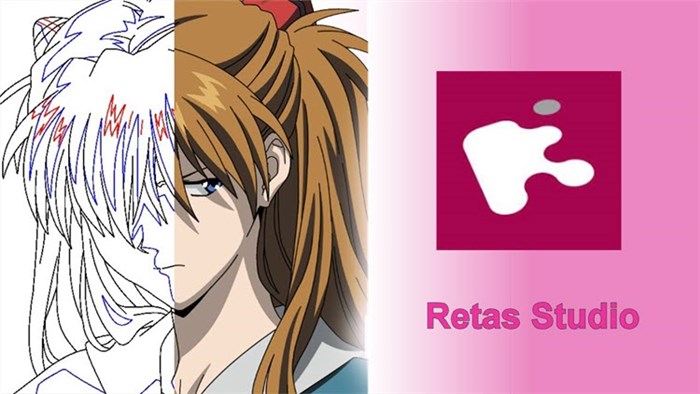
Retas Studio is high-performance 2D animation software for professionals designed by Celsys, allowing for hybrid and paperless workflows. It tackles bunches of animation productions from tracing, digital drawing, and exporting in Flash, QuickTime, and AVI.
Retas Studio consists of 4 apps, Stylos, TraceMan, PaintMan, and Core Retas to cover every step of traditional animation creating. Stylos is the paperless drawing tool that is capable of multi-layer editing, onion skinning, and advanced vector editing for keyframes and in-betweens. If you have some hand drawings, TraceMan can scan and convert them to Stylos. Then PaintMan colorizes cel-shading keys and in-betweens quickly with specialized palettes and fills tools. The last one, CoreRetas is to render scenes to animation and finish the process faster by rendering scenes selectively. Besides, any pre-rendered AVI or MOV footage can be imported and composited in CoreRetas allowing for a variety of filmmaking techniques.
12. Saola Animate - HTML 5 Animation Software Requires No Coding Skills
- Running OS: Windows 7 and later (64-bit only), macOS 10.11 and later.
- Best for: Professionals and amateurs
- Price: $49/year; $59 for perpetual license
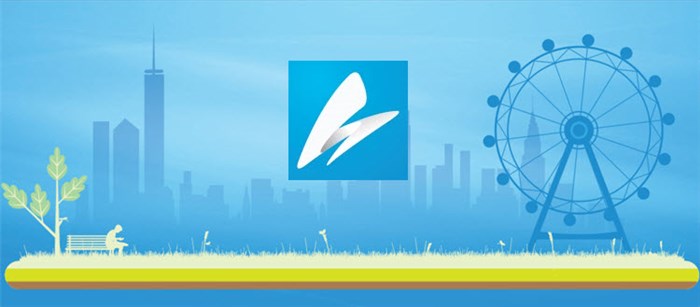
Saola Animate is the utility to create HTML5 animations and interactive web content without requiring any coding skills. With an integrated visual interface, Saola Animate allows you to do anything in the intuitive editor even though you are unaware of any coding skills.
Featured flexible motion path, Saola Animate enables you to draw complex curves than just straight lines. Also, stunning and natural animations are made by over 40 easing methods at your fingertips. Managing your frames with timelines and scenes turns to be an easy and pleasant experience for beginners. With its sprite sheets (a sequence of various graphics arranged in one bitmap image file), you can create an animated character representing one or several animation sequences while only needing to load a single file. It also can import external HTML, CSS, and JavaScript files or URLs and thus makes full control of your site's content.
13. Easy GIF Animator – Top GIF Animator for Windows
- Running OS: Windows 7, 8, 10
- Best for: Beginners
- Price: $29.95
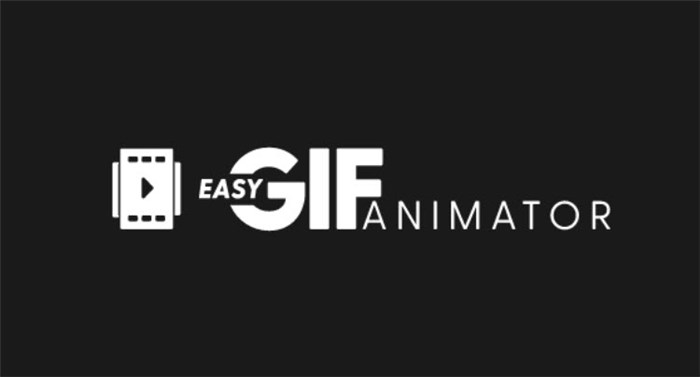
Easy GIF Animator is a powerful and popular animated GIF editor and the top tool to make animated pictures, banners, buttons, and cartoons. It tops in the GIF animation making for its easy frame management, instant effects, animation wizards, and multiple editing tools.
Its built-in image editor allows you to modify animation frames and draw new pictures. Besides basic line, shape, brush and coloring tools, it works with transparency so that you can create and manage the transparent areas of your images. And produce high-quality animated pictures.
Easy GIF Animator saves and converts animated pictures to GIF files just as the name indicates, but what it supports is not only GIF files. You can load GIF, PNG, JPEG, BMP and ICO files, and save the animation as SWF Flash (with background sound) or AVI files. But it's a pity that this software is not available on macOS.
14. Plotagraph Pro – Original Patented Photo Animation App
- Running OS: Windows 7and later, macOS 10.12 and later, Android 6.0 and up, iOS 10 or later.
- Best for: professionals and amateurs
- Price: $19.99/month, $99.99/year
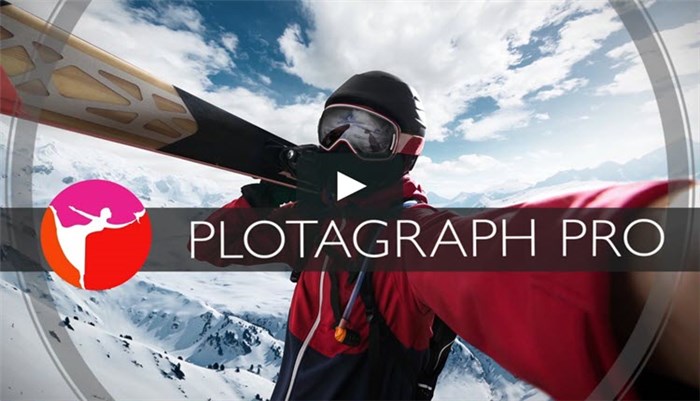
Platograph Pro is a photo animation app featured by Apple, Facebook and USA Today. It turns any still content into a looping GIF or video, which makes a revolution in photo animation fields.
This multi-platform software is now available on both mobile devices and PCs. So you can easily select an area and click and drag in the direction that you want the image to move to make it move back and forth. This is different from traditional animation making and GIF creating, and it requires high-tech image analysis to separate a certain part of the picture and thus brings life to a still JPG file. For its powerful functionality, it now has been used by Airbnb, Coca-Cola, Pepsi, and Chevrolet and other big guns.
15. GIMP – Best Animation Software for XP Pen
- Running OS: GNU/Linux, OS X, Microsoft Windows
- Best for: Professionals and amateurs
- Price: free

XP-Pen is a suite of professional drawing device developed by a Japanese company, composed of a graphic tablet, display monitor, a pad, and a stylus pen, which are predominantly used in designing and animation industries. GIMP is compatible with the XP graphic pen, which indicates that you can draw your work precisely instead of using a mouse.
GIMP is a multifunctional open-source app and comes with animation creation as well as photo manipulation. Before drawing, you should think of how to plan every layer because it requires multiple layers to accomplish the movements. But don't take it too complicated, just regard it as the separate frames of a video. You can create an animation by drawing with its basic tools such as pencil, brush, eraser and more, just like other 2D animation software. Meanwhile, you are allowed to import still images to make a GIF file.
16. Corel Painter – Best Animation Software for Huion Tablet
- Running OS: Windows 7/10 (64-bit), macOS 10.13 and later
- Best for: professionals
- Price: $299
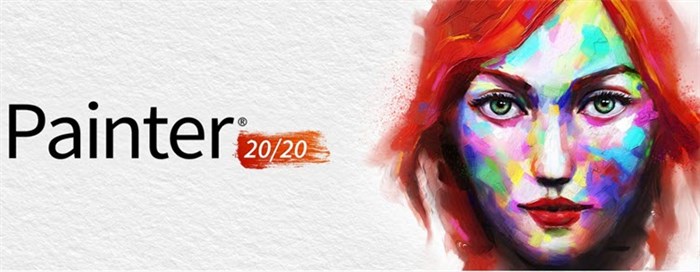
Just like XP Pen, Huion is another professional drawing device for animation making that Corel Painter supports. Most professional animation creators are using it as the main tool, for example, illustrators, graphics designers, etc.
This digital art and painting software offers unique digital art brushes that dynamically respond to stylus movements and canvas textures, resulting in magnificently authentic brushstrokes. It also applies GPU and CPU to speed up brush painting, and doubtlessly, it becomes the most sensitive painting tools that users have ever used. To bring something unique to your artwork, Corel Painter released 900+ brushes, and you can also import brushes from your original creation or others. But please note that this powerful software is only developed for animation images making. If you want to create animation videos, you can import elaborated images that you create in Painter to other animation GIF or videos making tools.
17. Biteable – Animation Software with Templates
- Running OS: online
- Best for: professionals and amateurs
- Price: $15/month (starter plan), $29/month (pro plan), $99/month (unlimited plan)
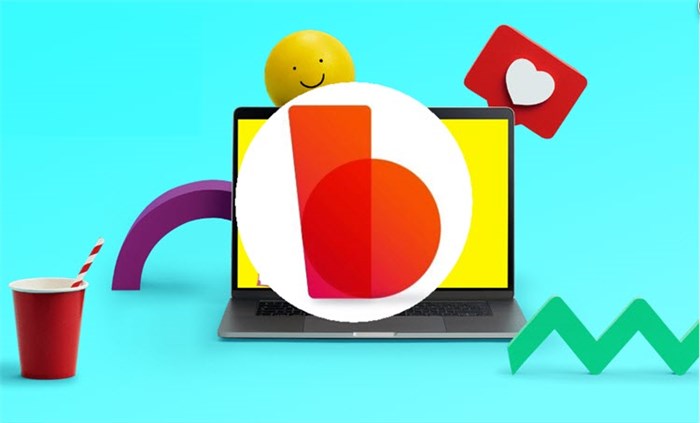
This is an online animation maker with loads of templates and used to create the animated business, marketing, training, and education videos by many big guns like Panasonic, Microsoft, IBM, etc.
With millions of templates, don't need to draw every line of your work, just edit the template of a preferred theme. Of course, you need to register and log in, then choose a category of your video, a promo video, training video, etc. Next, optimize the text of the template in which shapes and pictures are unchangeable, and then choose a color and audio file for this animated video. At last, you are to preview and export. It is like a PowerPoint file that played scene by scene seamlessly. If you want to make an animated video quickly, this online tool is perfect for you.
18. Moho Pro - Animation Software with Lip Sync
- Running OS: Windows and macOS
- Best for: Professional
- Price: $399.99
Moho Pro (previously known as Anime Studio), is a powerful 2D animation production software. This is an integrated animation tool for professionals and digital artists. Moho animation software has been used around the world to create amazing animations in professional studios, agencies, and OSCAR-nominated films. Moho pro with features including the new bitmap and freehand drawing features, powerful vector animation tools, revolutionary bone binding system, improved 3D object support, and simpler and more efficient workflow, will upgrade your project to another new level.
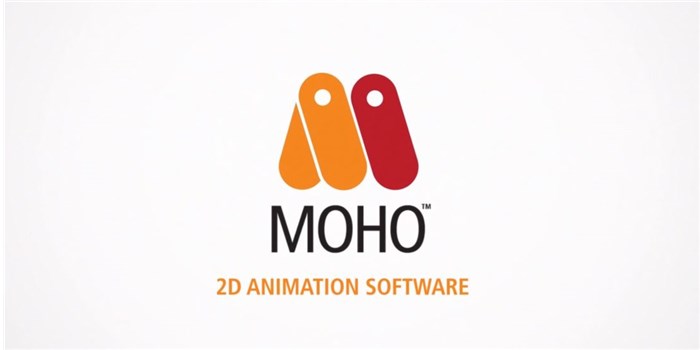
New Features of Moho Pro 13
- Bitmap Freehand by Frame Capabilities - By combining the new bitmap tools with images based on frame-by-frame layers, you can create traditional-style animations directly in Moho, and first, create multiple layers frame-by-frame like this. Then after processing the frame color effect, playback frame by frame to get the next moving picture effect.
- Bitmap Freehand Drawing Tools - With it, you can use the default bitmap brush built into the software to slowly control its direction, strength, and pressure to paint the texture and effect you want. When you create a background later or change the color of the image layer texture, you can use the "Bitmap Fill Bucket" to quickly fill large pixel areas, as shown in the following animation effect.
- Bitmap Freehand Brush Tool - Moho now has bitmap drawing capabilities, and one of Moho's default brushes can be used to create and texture characters in Moho. And if you are a Moho Pro user, you can create custom brushes using the new Brush Manager. For example, create a character's pose and expression based on a picture, and then compare the effect after creation and after texturing.
- 3D Objects Light Manipulation Support and 3D Object Material Properties Support - Moho Pro is good at and famous for 2D animation making. But now the added 3D function allows the software to import 3D models and add effects directly, which can better control and support operations and rendering settings. After importing a 3D football model, you can set its appearance. First, you can add light and shadow effects to achieve the solid effect of the ball in motion. Secondly, the material can be made old in the software, and some stains can be added without cooperation with other software. That is, Moho Pro 13 has more support for supporting 3D effect operations and rendering settings, controlling and deleting predefined output options.
- New Actions Window - In the new Actions window, you can organize the actions in Moho Pro 13. For example, create groups, tags, and more precise searches using keywords, words, and Boolean operations. Also, you can sort operations, create custom sort logic, or filter operations by type (regular, deformed, smart bones).
Needless to say, the above 5 new functions greatly facilitate the operation of the animation production staff and improve production efficiency.
19. Pencil2D - 2D Animation Software for Linux
- Running OS: Linux, Windows, macOS, and FreeBSD
- Best for: Linux users
- Price: Free (Open source)
Pencil2D is a free and open-source 2D animation application. It is simple to use and lightweight focuses on frame-by-frame animation. Features include the basic functions of animation production, allowing users to create hand-drawn scenes, seamlessly switching between vector and raster, etc. Even though it is cross-platform supported for Mac, Linux, and Windows, I would say it is better for the Linux users.
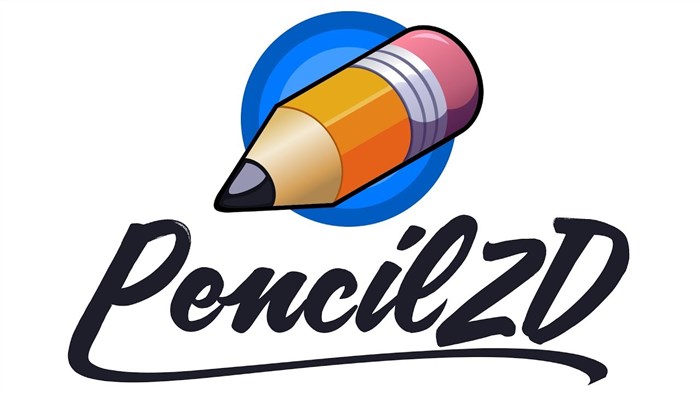
Its panel, or interface, is clear and simple. The left side of it is the drawing tool. The right side is mainly color selection tools such as the color palette. The focus is on the section below. The familiar timeline is divided into a dot matrix layer, a vector layer, and a camera layer. It may have no drawing software with rich functions but relatively simple to draw a cartoon pattern that you like on the layer.
Users can use brushes, pens, paint buckets, and line editing tools to draw shapes on the bitmap layer artboard, and use some image differences in different frames to produce animation effects like running. In addition to hand-drawn animations, you can also directly import vector graphics, pictures, insert sounds, etc. The format of the exported files after the animation is completed can be MP4 movies, GIF animations or PNG continuous images.
Pencil2D Highlights
- Open source and even free for commercial use.
- Layer support (separated layers of bitmap, vector and sound parts).
- Bitmap drawing, vector drawing, and sound support.
- And more.
How to Install the latest Pencil2D in Ubuntu
Step 1. Open the terminal via the Ctrl + Alt + T keyboard shortcut or search for Terminal from the application menu. When the terminal is open, run the command to install the flatpak daemon: sudo apt install flatpak. Type your user password when prompted and press Enter.
Step 2. Add the flathub repository by command: flatpak remote-add --if-not-exists flathub https://flathub.org/repo/flathub.flatpakrepo
Step 3. Finally, you can install Pencil2D from the flathub repository by command: flatpak install flathub org.pencil2d.Pencil2D
20. Krita - Animation Software for Wacom Tablets
- Running OS: Windows, macOS, Linux, Android, and iOS
- Best for: Beginners
- Price: Free, but users can donate to support the Krita team
Krita, a free and open-source digital painting software, has been intensively developed in recent years, and it is no longer the same as a few years ago. Compared with various commercial digital painting software, Krita no longer feels obvious defects and even has some advantages in some aspects. Below I will introduce the features of Krita, and I hope it can be helpful to everyone.
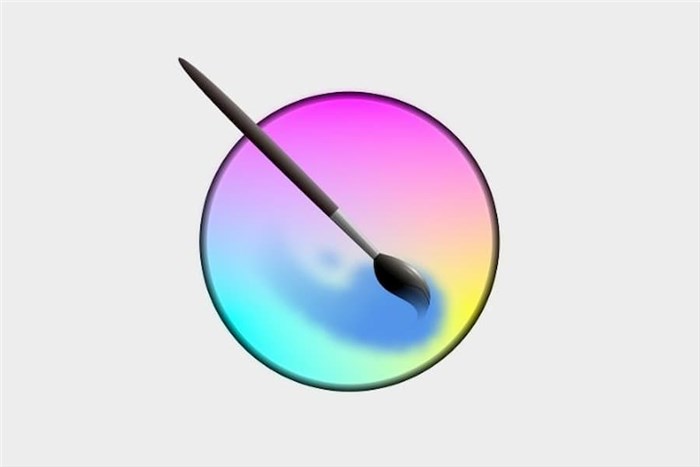
Features of Krita
1. Free and Open Source
Like we have said, and I will say it again, Krita is a free and open-source project. This point makes it different from the most common commercial digital painting software. It is released under the GNU GPL license, and you can freely view, learn, and modify the software and its source code under the GNU GPL specifications.
2. Interface Design and Common Operations
Krita's another biggest advantage is its intuitive operation. The following shortcuts can be performed without switching tools or looking at the keyboard, and you can perform a large number of digital paintings:
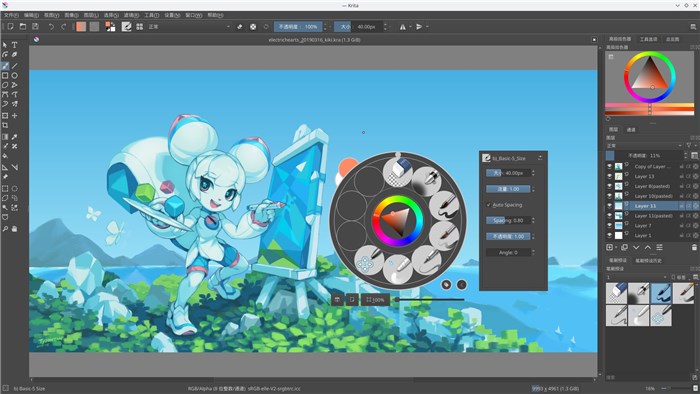
Ctrl + Nib Click: Pick the canvas color, release Ctrl to immediately return to the current painting tool.
Shift + drag left or right: Resize brush.
M: Canvas view displays in the mirrored horizontal way.
W: Suitable for drawing repeating textures
Right button: Pop up floating artboard on the canvas, which shows the color circle, common brushes, brush group loading, color history, brush common attribute sliders, as well as functions of zoom, rotate, mirror display, and hiding the tool panel.
Etc.
Krita's main interface interaction design is very suitable for digital painting purposes and is the biggest highlight of this software.
3. GPU Accelerated Canvas Display
Krita's canvas supports GPU-accelerated display via OpenGL, providing features such as fast stroke drawing and infinitely smooth scaling and rotation. OpenGL acceleration requires OpenGL 3.2 and above to be truly valuable. Minimum requirements: GeForce 8000 series of Nvidia card, HD 2000 series of AMD card, Intel's IvyBridge/3000 series.
4. Brush System
Krita has a fairly powerful brush system. It provides a variety of brush engines modeled after natural brushes, each of which is highly customizable. You can click F5 to pop up the brush options panel.
The nib painting modes have two types: stack and scour. The stacking mode mixes colors between each nib print inside each stroke; while the scour mode keeps the opacity inside the entire brush uniform. If used properly, it can make things drawn more natural and clean, and can also achieve many interesting effects with the characteristics of the brush engine.
5. Anti-Shake and Drawing Auxiliary Ruler
For inexperienced animators, Krita provides an anti-shake function and drawing auxiliary ruler. The anti-shake function can be opened in the Tool Options panel, and it also supports detailed anti-shake parameter settings. The drawing auxiliary ruler supports straight lines, parallel lines, ellipses, concentric ellipses, curves, various perspectives, etc. You can use the toolbox to select the Drawing auxiliary ruler tool and then turn on the Stick to the auxiliary ruler in the tool options of the freehand brush.
6. Layer System
Krita has a complete layer system. Not only is the layer blending mode the most abundant in existing software (76 types), but it also enables non-destructive editing through transparency masks, deformation masks, filter masks, and more. Layers can be grouped. It supports some PS layer styles. You can use clipping masks with the Inheritance Transparency feature.
7. Color Management, HDR Support, and Use with Blender
If you have color management needs, Krita is one of the few digital painting software that fully supports color management. It has two color management engines, ICC and OCIO, and supports countless color spaces. The channel bit depth can be up to a 32-bit floating-point. It also has the ability to process HDR images. Krita can be exported as an EXR image, and the OCIO configuration can be shared with Blender.
Etc.
21. Adobe Character Animator - Animation Software The Simpsons Uses
- Running OS: Windows and macOS
- Best for: Beginners, kids, and Professional
- Price: Included in Adobe's Service Plans, which provide more than 20 Adobe creative applications. Individual plan with $52.99/month, Students and Teachers plan $19.99/month, Teams plan with starting at $39.99/month
Adobe Character Animator, another member of Adobe family, is an intuitive 2d character animation application with an overall interface style and layout similar to Adobe Premiere. The main function is about puppets and imitations. Compared with the AE, Adobe Character Animator has a lower learning threshold, and its core real-time face tracking binding and voice identification are also its highlights. In the following, we are going to show you more details about it.
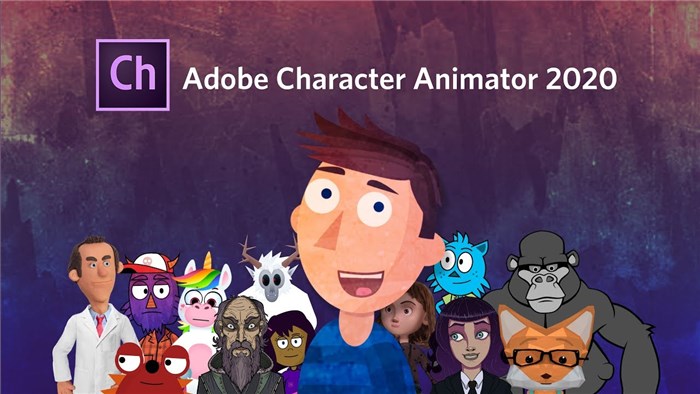
During the image building phase, Adobe Character Animator provides a series of templates. If you like, you can download and use them directly. It also gives you AI and PS source files to facilitate users to modify the image.
If you plan to create an original animated image, of course, you can do it yourself. You can start writing directly base on the AI or PS. It is recommended to download the source files of the blank face and Chloe and refer to their layer settings. This is to facilitate automatic recognition after importing (it will be more convenient for animation), it is recommended to edit the layer according to the template.
After you finish your character creating, you can import the PSD or AI file into Adobe Character Animator, and it will synchronize the layer completely. Adobe Character Animator supports the synchronous editing of AI and PS. If the picture is defective, modify it directly on the design software, Adobe Character Animator will receive the modification information and synchronize, which is very convenient.
Adobe Character Animator will also automatically recognize the layer according to your settings and pair it to various parts. You can manually dock, click the layer, and then click the corresponding part.
If you are going to animate the whole body of the character, not just some parts of its, you can also pair your torso, define each part of the body yourself through the handle tool, and pair them with the parts. At the same time, you can also set the properties of various parts, such as physical swing, drag and fix, breathing and other behavioral effects.
On the whole, Adobe Character Animator is smart and easy to operate, which provides a lower threshold for entry-level animation producers. It is worth your trying.
22. OpenToonz - Animation Software Used by Studio Ghibli
- Running OS: Windows and macOS
- Best for: Professionals and commercial
- Price: Free (Open-source)
OpenToonz is a kind of free and open-source version of Toonz. Well, there surely are some differences and changes between them. It is customized by the Studio Ghibli.
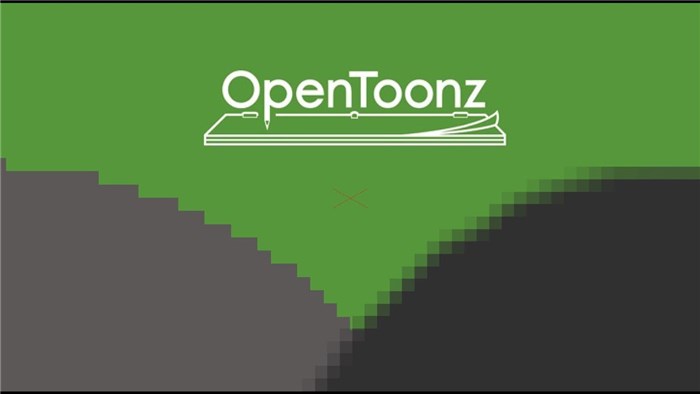
Honestly, this is the first time that I access this application, never used it before. However, after a two-day trial, the software is quite easy to use and learn, and I kind of get familiar with all the basic functions. If you have used Adobe Flash for making animation before, you can get started within just one day.
However, this software also has a common disadvantage, which most open source software has, is its poor stability. It has crashed several times during my tests. Saving automatically is a very important thing when we use such kind of software.
Another important point is that this software is more suitable for a studio than individuals. Well, I first got to know this point at its website, and I didn't believe it before. But later, I found that this software can be perfect if it works with a scanner printer and a professional camera. However, it is a little hard for many users to have these things, right?
OpenToonz is a rare software that can make bitmap animation and vector animation. Although TVPaint, which I use all the time, is always known as bitmap animation software, my 64-bit computer seems impossible to open the software. I think that I have to do with 2D vector animation in my whole life, but luckily, OpenToonz saves me.
From here on, in the following part, we mainly show you the ultimate list of the best 3D animation software with 13 options.
23. Adobe After Effects - Animation Software That Marvel Uses
- Running OS: Windows 10 (x64 only) v1703 and later and macOS 10.12 Sierra or later
- Best for: Professional
- Price: $20.99/month or $239.88/year
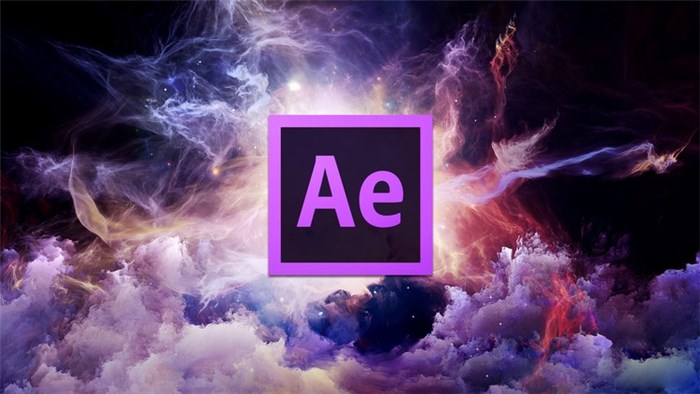
Well, firstly, we need to know that Adobe After Effects, referred to as AE, is not just a powerful animation making software, but also a great non-linear editor, audio editor, and media transcoder.
AE is perfect for agencies engaged in design and video effects, including television stations, animation production companies, personal post-production studios, and multimedia studios, such as Rick and Morty, the Kurzgesagt studio, the Marvel movie, etc. AE can help you efficiently and accurately create countless compelling motion graphics and stunning visual effects. It collaborates with other Adobe software for unmatched tight integration and highly flexible 2D and 3D compositing and loads hundreds of preset effects and animations, so you can add refreshing effects to your movies, videos, DVDs, and Macromedia Flash creations.
24. Autodesk Maya - Animation Software That South Park and Frozen Use
- Running OS: Windows(64-bit), Linux, macOS
- Best for: Professional
- Price: $195/month, $1545/year, or 4170 for 3 years
Autodesk Maya or mostly imply called Maya, the world's top 3D animation software produced by the American company Autodesk, is a high-end film production-level software with perfect functions, flexible work process, high production efficiency, and strong realism in rendering. It has been widely applied in professional films, television advertising, animation, movie special effects, and more.
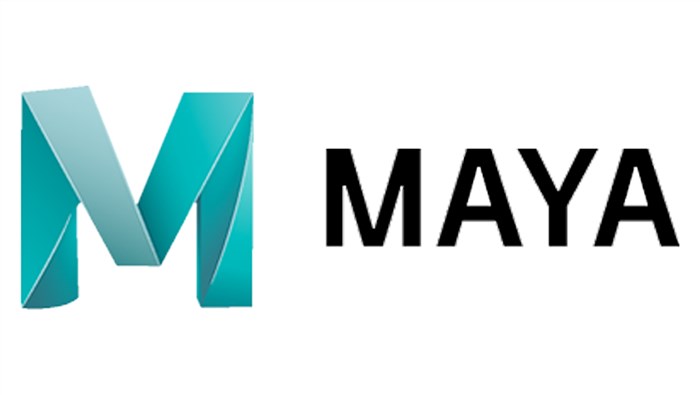
Maya integrates the most advanced animation and digital effects technology of Alias and Wavefront. It not only includes the functions of general 3D and visual effects production, but also combines with the most advanced modeling, digital cloth simulation, hair rendering, and motion matching technology. It could be one of the most popular graphic software in Hollywood, such as Star Wars series, The Lord of the Rings series, Spider-Man series, Harry Potter series, Return of the Mummy, Final Fantasy, Little Fairy Mouse, Madagascar, Sherk, King Kong, South Park, Frozen, and more.
Modules of Maya
Modeling: NURBS, POLYGON, and SUBDIVISON.
Artisan: A highly intuitive brush for a digital sculpture that can operate on NURBS and POLYGON.
Animation: Trax non-linear animation editor, inverse dynamics (IK), powerful character skin connection tools.
Paint Effects: Unique technology that makes it easy for you to produce the most complex, detailed, and realistic scenes.
Dynamics: Complete particle system with fast rigid and flexible body dynamics.
Rendering: Interactive rendering with film-quality effects, providing first-class visual effects.
Cloth: Fastest and most accurate simulation of multiple clothes and other fabrics.
Advanced Modeling: Additional NURBS and subdivision modeling tools that process accurate and realistic models.
Match Moving: Use 3D elements made by Maya to accurately match the original shooting footage.
Fur: Use realistic brushes to complete realistic modeling and rendering of short hair and fur.
25. ZBrush - Animation Software That Avatar Movie Use
- Running OS: Windows, macOS
- Best for: Professional
- Price: $39.95/month, $179.95/6 months, or 895 for lifetime
ZBrush is mainly a tool for building and sculpting high-resolution 3D models. Before the emergence of these tools such as ZBrush, artists and animators had to use sophisticated software and methods to carefully create detailed objects, which made the task tedious and even impossible.
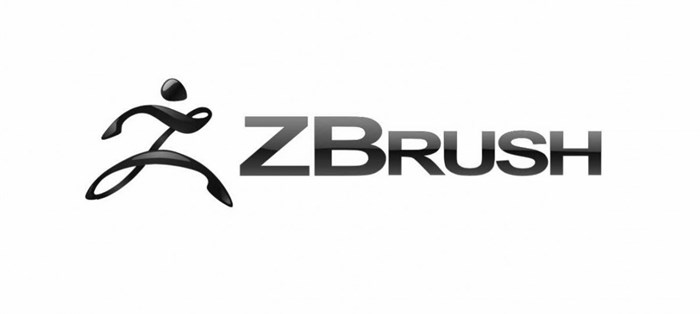
In ZBrush, the artist is introduced to sculpting using paradigms drawn from the traditional sculpting, clay balls. With ZBrush, artists can pull, push, press, scrape, or otherwise manipulate digital clay as if they were dealing with real objects.
The earlier version of ZBrush came with 30 brush tools that can be used for a variety of different processes and more controls. Using these brushes, artists can sculpt digital versions of almost everything they want.
By manipulating virtual surfaces in this way, 3D animators can create detailed features such as scales on dragons or wrinkles on human faces. Without tools like ZBrush, it is quite hard to imitate such fine details. ZBrush makes it easy to create highly detailed models for any kind of digital media. Talented designers can even simulate characters directly, which saves a lot of valuable development time.
Unlike traditional modeling software, ZBrush does not need to use separate polygons because it takes a completely different approach. ZBrush has also revolutionized the 3D animation pipeline. In the past, 3D animators often needed to create a low-resolution version of their character in another 3D package. This low-resolution model is called the base mesh. Due to hardware limitations, this basic model will be used for animation. However, ZBrush changed all that, by allowing users to create their character designs using the full power for 3D sculpting. Users can now sculpt their ideal character in a program and start working from there.
ZBrush prides itself on having a non-linear workflow. This means that users have more flexibility in their work. The limitations of other 3D software can be very strict, requiring users to follow the exact procedures to complete the final result. For example, for some 3D packages, users must complete their modes before creating textures, the surface shading of the model. Changing the model usually means losing paintwork. But ZBrush allows users to move freely between work models without losing any information.
The Difference Between ZBrush and Maya:
Since Maya is also quite popular, so some users may wonder how ZBrush is different Maya, right? Here I will tell you something base on my personal experience.
ZBrush is mainly for 3D and 2.5D modeling, while Maya has more than modeling.
If we only talk about modeling. We can take Maya as a trunk, while ZBrush is like a branch. Branches can describe details more than trunks, but not as powerful as trunks.
ZBrush has its unique tools for modeling and making high-precision details. Maya does not have as many rich tools as ZBrush in modeling. But it has several other major features in addition to the model, such as rendering particles, cloth, bones, and muscles. These are features that ZBrush does not have. And Maya was born for animation. ZBrush is only for high-precision modeling.
26. Autodesk Softimage - Animation Software Used in Jurassic World
- Running OS: Windows, Linux
- Best for: Professional
- Price: Discontinued
Tip: Autodesk Softimage was discontinued by Autodesk company on April 14, 2014, and did not provide product support anymore since April 30, 2016. But, as an application for 3D computer graphics, 3D modeling, and computer animation which has gained so much popularity in film and video game production, we must put it in this list and show you what it got.
Autodesk Softimage was firstly named Softimage|XSI owned by Avid Technology, and in 2008, Autodesk acquired Avid for about $35 million, which included the Softimage brand. And in February 2009, Autodesk renamed Softimage|XSI as Autodesk Softimage.

In those days, works created and produced with Softimage occupy the major markets of the entertainment industry and film and television industry. Many of the shots in movies such as Titanic, The Lost World, The Fifth Element, Jurassic World, and even more are produced by Softimage, with amazing visual effects.
Softimage is a high-end 3D animation production system running on the SGI workstation and Windows NT platform. It has been successfully used by the world-class animators in the film, television, and interactive production markets. It has a convenient and efficient working interface designed by the animator himself. The animation tools and fast and high-quality image generation give artists a very free imagination space and being able to create perfect and realistic artworks.
Softimage Features
- Render.
- Support mentalray 3.12.
- You can zoom the render preview window and adjust exposure and gama values.
- Script editor.
- New menu options.
- Enhanced k-frame panel.
- Added a new lock button for the animation blend editor.
- New collapse layer dialog.
- Character Animation.
- Introduce the new character creation module Autodesk's Character Generator.
- Users can customize characters through this module, download characters, and make mouth animation.
- ICE.
- Add a quick completion function, users can quickly access ICE properties through this function.
- Add tab index function, users can quickly insert ICE node through this function. (Similar to the tab key function of Houdini and Nuke).
- Added ICE property editor view.
- Added option to disable the ICE tree.
- New Syflex Map interface.
- Lighting and Shading.
- Quickly add Shader nodes by tab key.
- Add sorting function in the material manager.
- Scene management.
- Support Alembic format import and export.
- Back up scene files automatically.
27. Blender - Animation Software Suitable for Architectural Visualization
- Running OS: Windows, macOS, Linux
- Best for: Architectural Visualization
- Price: Free
Blender is an open-source cross-platform all-round 3D animation production software, providing a series of animation film production solutions from modeling, animation, materials, rendering, to audio processing, video editing, and so on.

Blender has a variety of user interfaces that are easy to use in different tasks, with built-in advanced video solutions such as green screen keying, camera backtracking, mask processing, and post node synthesis. There are also built-in cartoon strokes (FreeStyle) and GPU-based Cycles renderer. It uses Python as a built-in script and supports multiple third-party renderers.
Blender is designed for media workers and artists all over the world. It can be used for 3D visualization, and can also create broadcast and movie-quality videos. In addition, the built-in real-time 3D game engine allows the production of independent playback 3D interactive content.
With Blender, players who like 3D drawing can make their favorite 3D models without spending a lot of money. It not only supports various polygon modeling but also can make animations.
Main Features of Blender for Animation:
- A fully integrated animation creation suite. Blender provides a comprehensive 3D authoring tools, including Modeling, Sculpting, VFX, Simulation, Pipeline, UV-Mapping, Texturing, Rigging, Skinning, Animation, Particle, Scripting, rendering, motion tracking, Compositing, Post-production, and game production.
- Cross-platform support. Its OpenGL- based graphical interface is the same on any platform (and can be customized by Python scripts) and can work on all mainstream Windows (10, 8, 7, Vista), Linux, OS X, etc. On many other operating systems.
- High-quality 3D architecture brings a fast and efficient creative process.
- Small size for easy distribution.
28. Toontastic 3D – Parents' Choice Gold Awarded 3D Animation Software for Android and iOS
- Running OS: Android 5.0 and up, iOS 9.0 or later.
- Best for: Kids
- Price: free
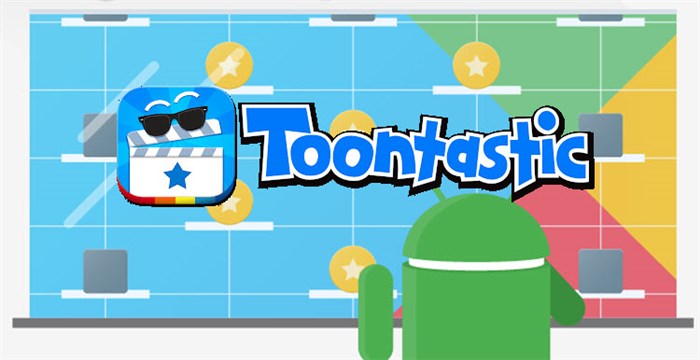
This free and easy 3D animation app is designed for kids, which puts kids in the director's seat and empowers them to draw and records their own cartoon characters on tablets and smartphones. And it won BolognaRagazzi Digital Award for Best Kids App of the Year with its rich and easy animation creating functions.
It enlightens future inventors, authors, and directors to turn their wacky ideas into 3D cartoons by designing original characters with 3D drawing tools, adding local pictures, mixing soundtracks, and customizing swashbuckling pirates, transforming robots, nefarious villains, and many more characters from its built-in toy box. On top of that, it is also competent to the adult's designing use, e.g. making a news report, designing video games' characters, and creating family photo albums.
29. Autodesk MotionBuilder - 3D Animation Software for Linux
- Running OS: Windows and Linux
- Best for: Linux Users
- Price: $1765/year
In the 2D animation software part, we have recommended you Pencil2D as the preferred 2D animation maker running on Linux, and here, we get you the 3D one, Autodesk MotionBuilder.

MotionBuilder is the industry's leading real-time 3D animation solution for film, video games, and broadcast production. Autodesk MotionBuilder focuses on interactive real-time workflows, enabling innovative 3D artists and technical artists to take on the most demanding animation-intensive projects. MotionBuilder is also a professional-grade solution designed for 3D data acquisition, processing, and visualization. It is not only an animation efficiency tool but also a tool that drives the creative iterative process.
There are four main features about it,
- A real-time 3D engine, specializing in real-time animation to make preview smooth.
- Motion capture editing and data cleaning, which is why most people choose MotionBuilder.
- Refined animation. After importing the motion capture data, you can continue to polish the animation. Of course, you can also directly use the Keyframe.
- Data can be sent directly to MAYA, 3dsMAX, Softimage, and other Autodesk software for editing.
A Brief Intro to MotionBuilder's Interface and Functions
First look at the video guide of this software,
Navigator - Here you can see the hierarchy of the scene, view the relationships between the asset, and edit the settings of the asset.
FCurves - The FCurves window allows you to create, view and modify function curves in various ways. By modifying the function curve, you can modify the animation.
Story panel - The story panel can be understood as a magic panel, where you can edit the characters, videos and other animations you want.
Key Controls & Animation Layers - Keyframes and layer modules are generally used together. When an object moves in space, if you want to record this spatial coordinate, you need to record it with the key. Layers can be understood as superimposed multidimensional worlds.
Asset Browser panel - The asset browser is similar to Maya's Visor, which integrates some assets built into Motionbuilder. Of course, you can also add your own assets there.
Properties panel - This is a panel where you can modify the size, display mode, color, etc.
Character controls - The last one is the role control panel, which is the core module of the entire software. For a character to be used flexibly in MotionBuilder, it must be assembled with this panel.
30. Nuke - Animation Software Used in Hollywood
- Running OS: Windows, macOS, Linux
- Best for: Professional film making
- Price: Nuke standard plan with $4988, Nuke X plan with $9298, Nuke Studio plan with $10758
Nuke is one of the mainstream film synthesis software that has been used in many movies and commercials produced by Digital Domain, providing artists with a way to create high-quality photo effects.

The well-known films which Nuke has participated in include: The Day After Tomorrow, The Enemy of Machinery, Extreme Agents, Titanic, Apollo 13, etc.
Compared to similar application AE, the advantage of NUKE is that it is suitable for processing a large amount of composition of a single lens, and can support the synthesis of up to 1023 channels of information. For example, in the work of the combination of CG and real shots, the 3D software renders a small thing and can be divided into dozens of layers. And the amount of engineering for a lens may be hundreds or even hundreds of layers. In AE, such complex Synthesis is not particularly convenient, while the NUKE node-type operation flowchart is much clearer and easier.
In NUKE, the processing of keying is also more flexible and more controllable. The edges can be processed very delicately. It is perfectly suitable for team operations.
Since many users have been asking us about the differences between Nuke and AE, here we have prepared these details, which we hope can help you. Get into them now.
Differences Between Nuke and AE
- Software operation mode: AE is based on layer operation, like PS; while Nuke is a node-based operation mode, which is different from traditional software. It transmits functional attributes through each node.
- Software positioning: Nuke has positioned itself in high-end film and television production; While AE is more difficult to locate. It can do low, medium and high-end, but it will be stretched when it encounters complex files.
- The ability to integrate materials: AE is more tolerant and acceptable for materials in multiple formats; Nuke currently only supports picture sequences and .mov formats.
31. Houdini - Animation Software That Disney Uses
- Running OS: Windows, macOS, Linux
- Best for: Professional film making
- Price: Free plan and various paid plans (up to $6995)
Houdini is a very powerful 3D animation software. It has most of the functions in 3D software. Compared with C4D's operations on objects in the hierarchical structure and label pairs ways. The operations in Houdini are to implement various commands through the connection of different nodes.
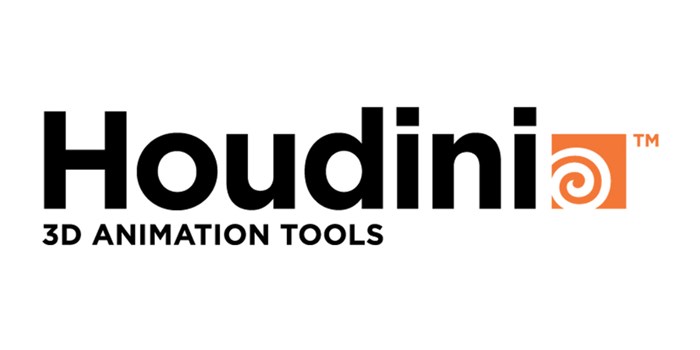
At the same time, Houdini is also a program-type software. It has its own VEX script language, which is used to process various parameters and data, and even to create custom nodes. For lots of software, we need to install plugins to achieve some effects efficiently. This is because the software itself does not give us a very large operating space, but Houdini gives all the imagination to the users of the software.
Features of Houdini
In general 3D software, many tools are packaged more like a preset object to reduce the user's learning cost. Similar to some C4D generators and deformers, although Houdini also has some packaged tools, we can read some data at the bottom of the software. By controlling the transmission and calculation of these data, we can achieve the effect we want to do. Therefore, under the larger operational space, the learning cost is undoubtedly increased.
As a node-operating software (the other representative software is nuke), you need to have good logical thinking to build the desired framework, and the biggest surprise to me is that you can go back to the node you want to modify the item anytime and anywhere after the production is completed.
Houdini covers almost all areas of 3D production:
Modeling - It has both non-destructive modeling and the supports for volume modeling. With them, it is not necessary to consider wiring and other issues. It is also convenient to modify the parameters of the previous operation.
Animation - Include dynamic animation, fluid animation, and character animation. Disney series like Frozen and Crazy Animal City is made using these Houdini animation, and now many special effects companies start to use the full Houdini process to create special effects.
Simulates - Simulates like smoke, particles, cloth, hair simulation and so on, can combine animations from several fields to produce realistic film-level effects.
Renders - Include powerful movie-level rendering engine Mantra, and some external renderers (like Arnold, etc.).
32. RenderMan - Animation Software Used by Pixar
- Running OS: Windows, macOS, Linux
- Best for: Professional filmmaker
- Price: $595 per license
RenderMan, formerly known as PhotoRealistic RenderMan, is an animation application mainly for rendering. Personally, I would call RenderMan as the king in the rendering industry. And in the following parts, I will show you the significant features of RenderMan from its birth to this day.
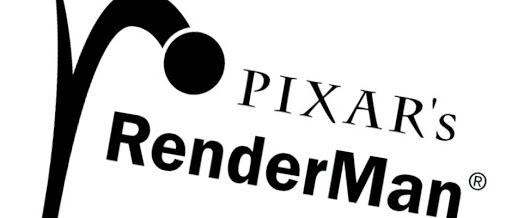
RenderMan was born in 1988, developed by Pixar. It was revised in 1995, and in July 2000, the 3.2 version was released. In those years, RenderMan almost dominated the film rendering industry.
RenderMan has always been the bellwether in the rendering world. Just in 2017, there were as many as 14 visual effects movies that RenderMan worked for, like Alien: Covenant, Coco, Blade Runner 2049, Kong: Skull Island, and so on. However, with the continuous development of Vray and Arnold which have been also widely used in film and television special effects production. It seems that RenderMan starts to try to change himself to adapt to the changing market environment.
RenderMan adopted a new rendering architecture RIS in version 19. Until then, the old REYES algorithm was abandoned. This feature must be one of the biggest updates for RenderMan. This algorithm is not physically one and the process of working is very complex. Different effects need to be implemented using different shaders. To achieve a scene requires adjusting multiple N parameters. With it, we can do the photo-level rendering. What's more important is that the RIS process is easy to operate, allowing artists to focus on content creation, instead of having to worry about the adjustment of various complicated parameters of the renderer.
The original intention of designing RIS was to ray trace as fast as possible. During the design period, with the help of a new integrator architecture, BRDF (Bidirectional Reflection Distribution Function technology) and intelligent light services, RIS is becoming a leader in processing speed and memory efficiency when processing multi-surface spherical patterns in complex scene production. It can be said that RenderMan RIS uses almost the best renderer architecture based on path tracking rendering algorithms in the world.
In March 2015, Pixar announced the free version of RenderMan, and its scope of application includes research, learning, evaluation, plug-in development, and personal project work. The features of the free version are the same as the official version, without watermarks, time limits or other use restrictions.
And later, in July 2015, RenderMan released version 20 to improve the workflow of the new RIS rendering mode, including new Denoise options and a new Visualizer view for debugging complex shots.
Version 21 was released in July 2016. Updated the same shaders and lights used in Pixar production, and added a new PBR material library. The update also adds GPU support to the software's Denoise system. From this update, we can see that RenderMan is constantly adapting to market needs and changes. We know that, in recent years, the application of PBR has been so hot. However, RenderMan is not a product of the PBR era, let alone formulated for the PBR standard. Therefore, in order to engage in PBR, the original design of RenderMan was almost completely overturned. Pixar has made every effort to improve RenderMan's architecture so that he can be compatible with PBR.
In July 2018, Pixar released the RenderMan version 22. RenderMan 22 has made major updates to the renderer, introduced a new real-time rendering workflow, and increased overall rendering speed by 100%. Under the engine, the ray tracing core is updated, and old RIB-based scene descriptions are being replaced by new scenes based on Pixar's common scene description format. The updates also include Pixar's own Pixar Unified light integrator and a new curve representation.
So we have to admit that the technical team behind RenderMan is very powerful. You may know that in today's world, no one company can surpass Disney in the field of animation and visual effects, by far. Disney has a total of five major research centers: Pixar, ILM, Disney Zurich Research Center, Disney Animation, and Carnegie Mellon University Labs. The results of these five research centers are shared, and also there is a competition between them. That is to say, the research results will be compared, and the winner will survive. Importantly, the research results are applied to actual projects through Pixar's RenderMan. Therefore, RenderMan has a more solid infrastructure and has a stronger momentum for future development.
33. Premo - Animation Software Dreamworks Use
- Running OS: Unknown
- Best for: Professionals
- Price: Unknown
Well, this is kind of a new-coming animation application, but, Dreamworks has applied it for many outstanding films, like How to Train Your Dragon 2. And it seems only available for the Dreamworks team. There is no information that we can find about what operating system it can run on, how much it would cost, etc. Anyway, we still have something for you to get to know this powerful tool.
Dreamworks had a really superb tool before, but it was based on a very old toolset, and after years of development, it was not rewritten. Therefore, Premo is a new beginning, taking advantage of multi-core computers and multi-threading. Artists can get the full high-resolution of real-time characters with it. When animating, animators do not need to switch to the lower resolution of the character. So when you operate, you can see this deformation. It does so much guesswork, and you just get the result. When we pose for it, you can see everything in the final image. So, the process of occluding the lens is faster, where you have high-definition characters, and the polishing you did at the end is extremely fast because it has not been in trouble as before. With Premo, it's great to be able to have 10 to 15 characters in your scene and still be able to make it work.
Premo allows artists to manipulate animated characters on the tablet in real-time with just one brush. It helps artists feel more intuitive about their choices. Previously, they had to work with various curves and images on the numeric keypad. Now they just need to get a character, move any part, and create a key framework, and the rest work will continue afterward.
This toolkit made animators work with both hands again. In the previous system, just creating a simple smile, blinking or lip movement required very tedious steps. While Premo has changed it revolutionarily.
34. iGroom - A Fur-Controlling Animation Software Used in Zootopia
- Running OS: Unknown
- Best for: Professionals
- Price: Unknown
In confidentiality, iGroom is similar to Premo which we have talked about above. It is now kind of the top-secret tool belonging to Disney. And what iGroom is mainly best at is its powerful fur controlling technology.
In the past, when animators designed the outline or movement of a character, they had to predict how the character would look if it had hair. Therefore, the makers at the time had to spend hours and hours pre-rendering to observe the fur effect of the character in different actions. But in Zootopia, it seemed not working at all, because there are so many animal characters.
So in order to complete these impossible figures, Disney's team of engineers decided for the iGroom software. iGroom can create a virtual fur layer for each character. Animators can adjust the thickness of the layer to express the thickness of the hair. The chubby Officer Clawhauser in the movie used this technique, and audiences could see the dappled hair full of its fat face realistically.
Through this software, Disney has made 205 million hairs for the main character Judy Hopps and Nick Wilde. Even a little gerbil character has 480000 hairs, which is more than the main character Elsa in Frozen, 400000 hairs.
35. Poser - Animation Software RWBY Uses
- Running OS: Windows and macOS
- Best for: Modeling for human figure projects and professionals
- Price: UnknownPoser Pro with $199 for lifetime access; Poser Pro Upgrade with $99 for helping older versions upgrade to the newest one.
Poser Pro is a professional 3D animation production software launched by Bondware company. The software is suitable for most 2D and 3D animation production. At the same time, it is also used to complete the character modeling. Not only does the model have data parameters, but also every component of the model, such as the hands, feet, and head, is equipped with parameters. With these, the model produced is very real and textured. The software also provides designers with a rich model library, which helps Poser has a greater advantage over similar software for 3D animal and human modeling and 3D animation.
In the following, we will tell you more details.
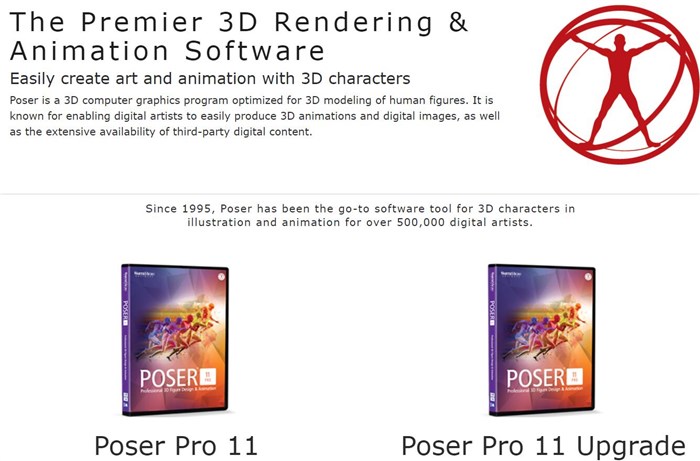
The newest version, Poser pro 11, provides users with nearly a hundred types of character models and animal models, ensuring that in most cases, users can use the models as their needs and inspiration for creation. At the same time, the model of Poser Pro 11 and the components that make up the model, such as human hands, feet, head, etc., all will have some parameters. By setting the parameters, users can freely adjust the model's posture, thereby creating desired character modeling. At the same time, there are two methods for the user to choose the pose of the model. One is to set some parameters in combination with the editing tool to obtain a certain pose, and the other one is to assign the existing pose to the model or adjust it slightly.
New Features of Poser Pro 11
SUPERFLY: new physically-based rendering engine: Built on Blender's rendering engine, SUPERFLY brings the power of physics-based shadows for rendering. It can render light accurately. Users can choose to use the same, familiar material Fireflies, or take full advantage of Superfly's material system by creating loops or physically based shaders.
Improved live comic previewing: You can control all your comic mode settings with an easy to access panel.
Custom parameter palette: You can add frequently-accessed parameters to your custom palette, so you always have those settings at your fingertips, without choosing a different cast or list. This palette holds the required characters, props and scenes.
Customizable shortcuts: You can customize Poser's hotkeys, or also match the hotkeys of Poser and other programs.
New female figure: Poser 11 and Poser Pro 11 include a brand new Poser character: Paul, which never been seen before.
Export some scenes (pro version only): When working in a complex scenario, sometimes you need separate sections for allocation. This feature allows you to choose exactly who the characters, props, lights, and cameras are included, and you can easily merge scenes later.
Export deformation injection files (pro only): Content creators will find it handy to save morph injection files from the export right-click menu. This tool creates a few clicks to assign a deformed injection file.
Etc.
From here on, in the following part, you will see the list of the best stop motion animation appliations.
36. Stop Motion Studio - App to Make Movies like Wallace and Gromit
- Running OS: Windows XP and later, macOS 10.11 and later, Android 5.0 and up, iOS 10 or later.
- Best for: Professionals and amateurs
- Price: $9.99 for Mac, $1.99 for Windows, $4.99 for iOS/Android
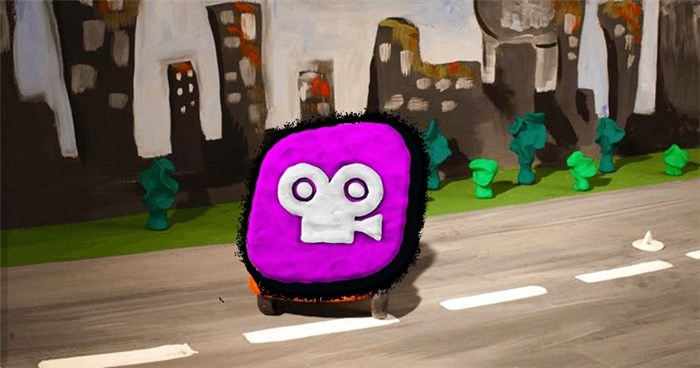
If you want to create stunning Lego short videos on YouTube, you should try Stop Motion Studio for its unique features, like capturing images in 4K or use green-screen effects, and edit shots frame by frame.
This app helps you live to view the file on your digital camera as long as it connects to the camera to adjust ISO, shutter speed, etc., or shot pictures directly in it with the highest resolution of 4K. Additionally, it provides different painting tools (support for new Apple Pencil) so that your multiple hand drawings can be edited into animation work.
It turns good-looking pictures into spectacular by editing frame by frame. You can set the In and Out points to make a loop specifically, change the background of your character using chroma keying, zoom in/out, and add stickers to the objects like putting facial expression to Lego figures, also adding sound effects brings life to all of your cute characters.
The Bottom Line
We all know that it is impossible to explore the whole world of animation applications, so we will also continue to look for the best animation software left out there to make this list more ultimate. And if this list does not have your favorites, please tell us and we will update them.







